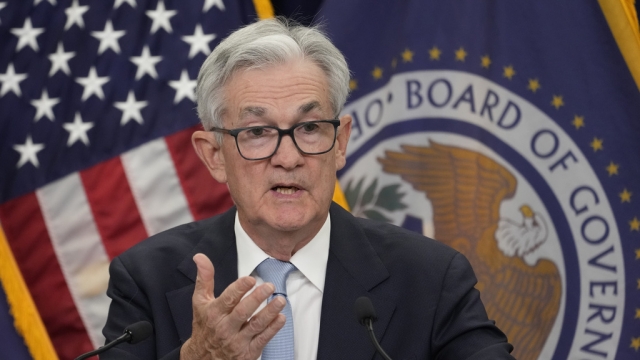Federal Reserve Chair Jerome Powell will announce Wednesday afternoon whether interest rates in the United States will go up for the 10th time in the last year.
The Fed will make the decision following the announced bank failure of First Republic Bank. The bank became the third in the U.S. to crumble after the March collapses of Silicon Valley Bank and Signature Bank.
Another interest rate hike is considered likely as Powell has stated that the board’s goal is to get the annual rate of inflation down to 2%.
According to the Bureau of Labor Statistics, the rate of inflation was at 5% as of March, which is down from a peak of 9.1% last summer.
Since last year, the Fed has increased the Federal Funds rate from 0.75%–1% to 1.5%–1.75%. After a series of interest rate increases, the rate now stands at 4.75%–5%, its highest mark in 15 years.
SEE MORE: Fed economists project 'mild' recession later this year
Dave Weisberger, former vice president of program trading at Morgan Stanley, told Scripps News that when interest rates go up, the price of bonds drops. When the value of these bonds drops, banks are less secure against bank runs.
“Now, ordinarily, that's not that big of a deal, but the fact is confidence in the banking system outside of the large money center banks, so-called too big to fail banks, is really dropping,” he said. “So now when you have the second largest bank failure happening, being bought back by JP Morgan and the regional bank indices getting hurt, that's a real problem. So as rates go up, banks are definitely much more vulnerable.”
It’s why Weisberger is among economists who believe the Federal Reserve should not be increasing interest rates even more, even if the Fed hasn’t hit its 2% inflation goal yet.
“I and many others believe that they should have paused after the last increase and before the banking system has continued to unravel,” he said. “Leading indicators are indicating that both inflation will decrease and the economy is tipping towards recession.”
Although depositors with less than $250,000 are insured by the government, those with larger accounts don’t have the same assurances.
“The problem that we have today relates to confidence and confidence is a tricky thing,” Weisberger said. “The last thing you ever want to do is cause panic, and when you see banking failures like this, that's it.”
Trending stories at Scrippsnews.com



